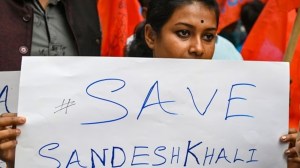- India
- International
Neither expect, nor asked India to curb Russian oil imports; price cap a success, say US officials
Officials clarified that oil importers like India, which are not part of the price cap coalition comprising G7 countries and their allies, are not bound by the price cap as long as their purchase of Russian oil does not involve any shipping or insurance service from providers in the coalition countries
 India is one of the top buyers of Russian seaborne crude. (File Image)
India is one of the top buyers of Russian seaborne crude. (File Image)The United States neither expects India to reduce its oil imports from Russia and has not even requested New Delhi to do so, US Treasury Assistant Secretary for Economic Policy Eric Van Nostrand said Thursday. He said that the objective of the sanctions and G7 price cap regime is not to push Russian crude out of the market, but to keep it flowing while limiting Kremlin’s revenue from oil exports, which in turn impairs Russia’s ability to fund the war in Ukraine.
“The price cap’s goals are to limit Putin’s (Russian President Vladimir Putin) revenue and maintain global oil supply, essentially by creating a mechanism for India and other global consumers of oil to access Russian oil at discounted prices,” he said at an event organised by the Ananta Centre in New Delhi.
Nostrand is in India along with Assistant Secretary for Terrorist Financing and Financial Crime Anna Morris to discuss, among other matters, cooperation on the $60-per-barrel price cap with government officials and Indian companies.
The officials clarified that oil importers like India, which are not part of the price cap coalition comprising G7 countries and their allies, are not bound by the price cap as long as their purchase of Russian oil does not involve any shipping or insurance service from providers in the coalition countries. India is one of the top buyers of Russian seaborne crude.
Sanctions on Russian crude oil exports
The price cap regime was introduced in December 2022 and prohibits export of Russian seaborne crude at over $60 per barrel if the trade involves Western shipping or insurance services. Given that service providers in coalition countries are dominant players in the global shipping industry, Nostrand said that strict enforcement of the price cap also forces Russia to offer better discounts on oil exports that are not bound by the ceiling.

“The price cap is designed to leave Russia with only bad options… We want him (Putin) to choose between three bad things: selling with coalition services under the price cap, selling outside the price cap, or shutting his oil in and not putting it to market. With a strong and robust price cap regime, Putin is going to prefer to sell as much as he can outside the price cap. But in order to maximise his sales outside the price cap, when a large part of the global coalition is already involved in the price cap, he is going to have to offer it cheaper,” Nostrand said.
Both Nostrand and Morris said that the price cap has been a success as it has so far met its objective of limiting Russia’s oil revenue without causing a global supply shock or an oil price spike.
“When first implemented, the price cap was met with considerable skepticism… United States and our international coalition have been pleased with the effectiveness of the policy. We saw the Kremlin’s tax revenue from oil drop more than 40 per cent over the first nine months of 2023 compared to the same period a year earlier. And we were gratified to see that the price cap was working in practice as well as in theory,” Nostrand said, adding that emerging markets like India benefited from the price cap as Russia was forced to deepen discounts on its oil.
The US and other coalition partners are now focussed on what they call phase two of the price cap regime. Given the price cap and coalition countries’ dominance in maritime services, Russia started amassing a tanker fleet of its own—the so-called shadow fleet—to ship its oil. According to the US officials, the second phase of the price cap regime is focussed on strict compliance, and action against price cap evasion.
“Russia has been aggressively investing money to build out its ability to sell oil outside the reach of the coalition. Now, point one is that the money that they have been investing is money they would otherwise spend on the battlefield in Ukraine. So, we are happy to see them spending money on oil tankers and not tanks. But, also importantly, it is now time for us to respond to a different reality, where Russia has created a larger channel to move oil without touching coalition services,” Nostrand said.
“We are continuing to focus on strategies that make it more complicated for Russia to avoid the price cap regime, and therefore force Russia to sell oil for less,” he added.
As part of this phase of the price cap regime, the US has over the past few months sanctioned a number of vessels for price cap evasion, apart from sanctioning a few fleet operators and vessel owners as well. Notably, Russia’s state-owned shipping major Sovcomflot and 14 related tankers were sanctioned by the US in the last week of February. Indian refiners are now refusing to take delivery of crude transported by Sovcomflot tankers in an evident bid to steer clear of any secondary sanction risk. According to a senior government official, the government does not want Indian refiners to brazenly flout the G7 price cap or get involved in trades that might have sanctions-related risks.
Indian refiners ramped up Russian oil purchases in the aftermath of Moscow’s February 2022 invasion of Ukraine. As the West started weaning itself off Russian energy supplies, Russia began offering deep discounts on its crude oil, which Indian refiners began lapping up. Prior to the war in Ukraine, Russia was a marginal player in India’s oil imports, but is now New Delhi’s biggest source of crude ahead of traditional heavyweights Iraq and Saudi Arabia.
Apr 04: Latest News
- 01
- 02
- 03
- 04
- 05





























